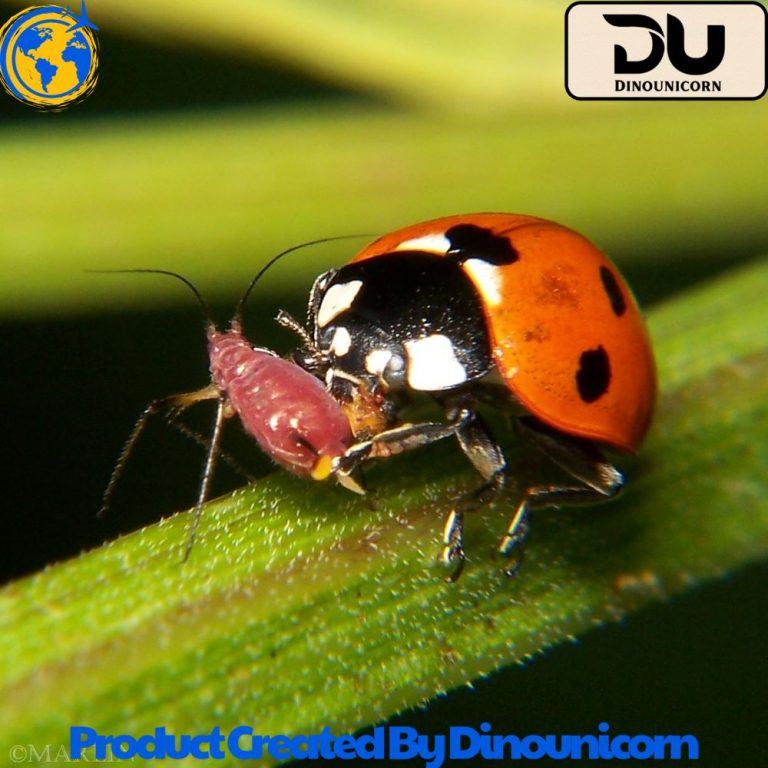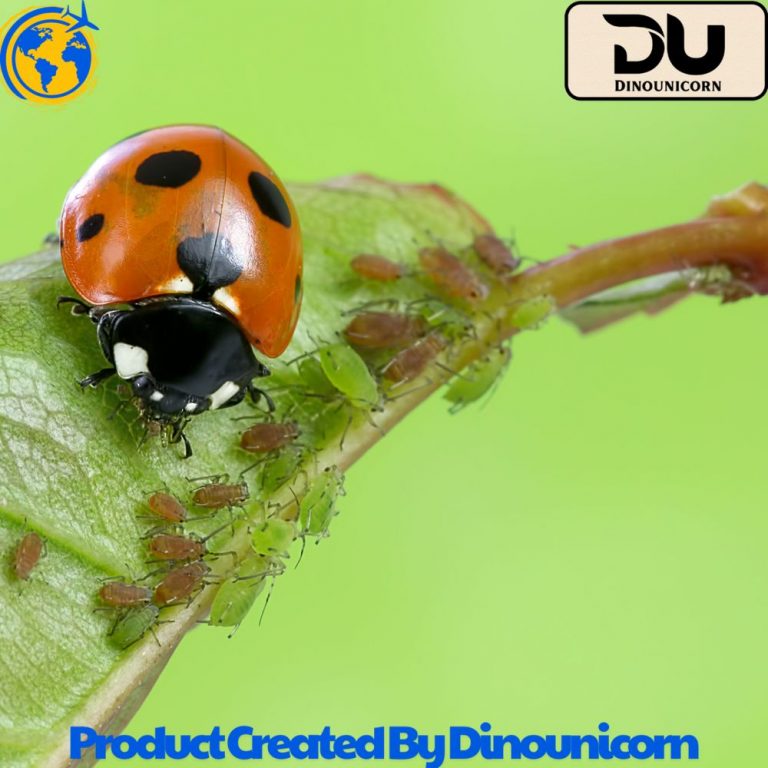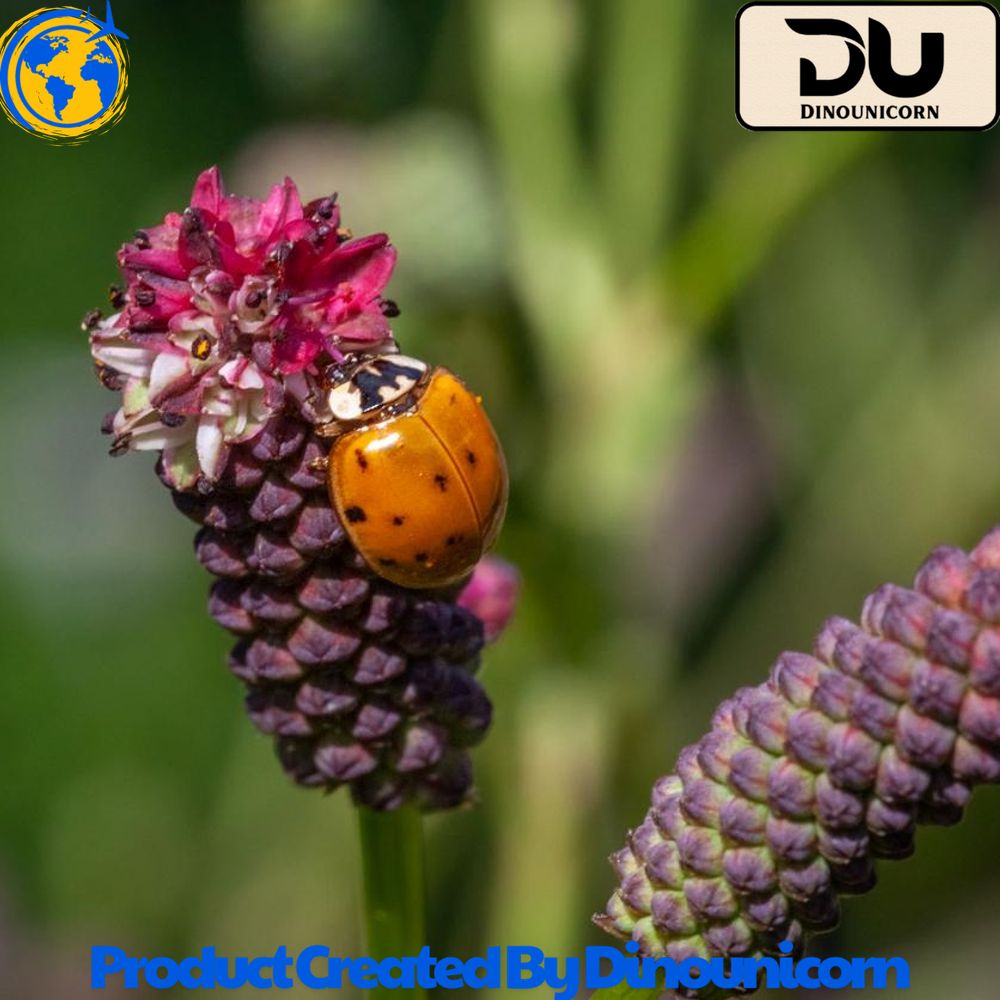Blog
What Do Ladybugs Eat?
What Do Ladybugs Eat?
Ladybugs, also known as ladybird beetles, are small yet mighty creatures in the natural world. These vibrant insects are not only a symbol of good luck in various cultures, but they also play a crucial role in maintaining a healthy garden ecosystem. If you’ve ever wondered what ladybugs eat, you’re in the right place! In this article, we’ll explore their diet, eating habits, and how they contribute to organic pest control.
Introduction to Ladybugs and Their Diet
Ladybugs are often regarded as beneficial insects for gardeners. With their striking red or orange shells adorned with black spots, they are easy to spot and even more valuable to garden ecosystems. As voracious predators of various garden pests, ladybugs’ primary food source is aphids, small insects that damage plants.
But ladybugs don’t stop at aphids. They consume a variety of insects and other small creatures that can damage plants and crops. This makes them a natural and eco-friendly alternative to pesticides. By understanding what ladybugs eat, gardeners can harness these little helpers to protect their plants and flowers.
What Do Ladybugs Eat?
Ladybugs’ Primary Food Source: Aphids
Aphids are tiny, soft-bodied insects that feed on plant sap, causing damage to leaves, flowers, and stems. They are one of the most common pests found in gardens and crops. Ladybugs, in particular, are known to consume vast numbers of aphids, often up to 50 aphids in a single day. This makes them highly effective at controlling aphid populations, especially during peak growing seasons.
Ladybugs are able to locate aphids using their keen sense of smell. Once they find an aphid colony, they begin feeding on the aphids by piercing their bodies and sucking out the juices. This is why ladybugs eating aphids is such a popular topic among gardeners looking for natural pest control solutions.
For more information about ladybugs and their role in pest control, you can visit Planet Natural.
Do Ladybugs Eat Other Insects?
While aphids are their primary food source, ladybugs eat other insects as well. In fact, ladybugs are opportunistic feeders, meaning they’ll eat whatever they can find. Aside from aphids, ladybugs will feast on mites, whiteflies, thrips, and even the larvae of other insects. Some species of ladybugs also consume small caterpillars and other soft-bodied pests that threaten plants.
Their appetite for various insects makes ladybugs incredibly useful in gardens. By feeding on these pests, ladybugs help reduce the need for chemical pesticides, which can harm the environment.
If you want to learn more about the range of insects ladybugs feed on, check out Insect Lore’s Blog.
Do Ladybugs Eat Plants or Leaves?
One common misconception is that ladybugs eat plants or leaves. In reality, ladybugs do not consume plant matter, except in rare cases. They are strictly carnivorous insects that feed on other bugs. Their diet mainly consists of soft-bodied insects like aphids, which they capture with their mandibles.
This is great news for gardeners who may be worried about ladybugs damaging their plants. You don’t have to worry about ladybugs eating leaves, as they prefer insects that are causing harm to your plants.
To learn more about ladybug diets and plant care, visit National Geographic.
Do Ladybugs Eat Flowers or Fruit?
While ladybugs may occasionally crawl over flowers or fruits, they do not eat them. Their diet consists of pests rather than plant material. However, ladybugs are often found in areas with a high concentration of aphids, and this includes the leaves and buds of plants that are blooming or bearing fruit. Their role is to control the pests that would otherwise damage these plants.
By attracting ladybugs to your garden, you can help ensure that your flowers and fruits stay safe from unwanted pests.

Ladybug Eating Habits in Different Environments
What Do Ladybugs Eat in the Wild?
In their natural habitat, ladybugs eat a wide variety of insects, just as they do in gardens. Wild ladybugs typically feed on aphids, mites, and other small insects found on shrubs, trees, and wild plants. Their diet depends on what is available in their environment. In some cases, they may even consume pollen and nectar, though these are not their primary food sources.
Ladybugs are highly adaptable creatures, capable of surviving in a range of environments from forests to grasslands, always looking for their next meal of small pests.
What Do Ladybugs Eat in Gardens?
In gardens, ladybugs primarily feed on aphids, but they may also consume other small pests such as whiteflies and scale insects. Gardeners intentionally attract ladybugs to their gardens because these insects help keep pest populations in check without the need for harmful chemicals. The role of ladybugs in a garden ecosystem is incredibly beneficial.
Ladybugs are often used as part of organic pest control methods, making them an environmentally friendly solution to common garden problems. They can be especially helpful during the growing season when aphid populations tend to spike.
How to Attract Ladybugs to Your Garden
Plants That Attract Ladybugs
Ladybugs are attracted to gardens with abundant pests such as aphids. To naturally draw ladybugs into your garden, you can plant flowers and plants that aphids love. These include:
- Dandelions
- Nasturtiums
- Marigolds
- Sunflowers
- Yarrow
In addition to these plants, ensuring that your garden has plenty of other insects (such as aphids) will help ladybugs find their way into your garden. Creating a welcoming environment for ladybugs can significantly reduce pest damage and improve your garden’s overall health.
Natural Predators of Ladybugs
While ladybugs are beneficial to gardens, they are not without their predators. Birds, frogs, and other insects may prey on ladybugs, particularly during their larval stage. To protect ladybugs, gardeners can implement strategies to keep predators at bay, such as providing sheltered spaces where ladybugs can hide or establishing a diverse ecosystem that supports a variety of beneficial insects.

Ladybugs and Organic Pest Control
Using Ladybugs to Control Garden Pests
Ladybugs are among the most effective forms of organic pest control available to gardeners. By releasing ladybugs into your garden, you can help control a wide range of pests, particularly aphids, which are known to damage plants. Unlike chemical pesticides, which can harm beneficial insects and pollute the environment, ladybugs provide a natural solution to pest problems.
Ladybugs are also highly efficient. As mentioned earlier, they can consume up to 50 aphids a day. This means that introducing just a few ladybugs into your garden can have a significant impact on pest populations, reducing the need for harmful chemicals.
Conclusion: The Role of Ladybugs in a Balanced Ecosystem
Ladybugs are much more than just cute, red insects. They are essential creatures in maintaining a balanced and healthy garden ecosystem. By consuming pests like aphids and mites, ladybugs contribute to sustainable gardening practices and help protect plants from damage. Whether you are looking for a natural pest control solution or simply want to learn more about these fascinating insects, understanding what ladybugs eat is the first step.
If you’re interested in supporting eco-friendly gardening practices, consider attracting ladybugs to your garden and encouraging their role in pest control.
Frequently Asked Questions
1. Do ladybugs eat plants?
No, ladybugs do not eat plants. They are carnivorous insects that primarily feed on aphids and other soft-bodied insects.
2. What is the main food source for ladybugs?
The primary food source for ladybugs is aphids, but they also consume other small pests such as mites and whiteflies.
3. How can I attract ladybugs to my garden?
To attract ladybugs, plant flowers that aphids love, such as sunflowers, nasturtiums, and marigolds. You can also provide shelter and ensure your garden has plenty of pests for them to feed on.
4. Do ladybugs eat other bugs besides aphids?
Yes, ladybugs will eat other insects like mites, scale insects, and sometimes small caterpillars.
5. Are ladybugs harmful to plants?
No, ladybugs do not harm plants. They help protect plants by consuming harmful pests like aphids.
If possible, please visit dinounicorn.com or freshmilktee.com to support us.
 Skip to content
Skip to content

